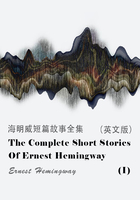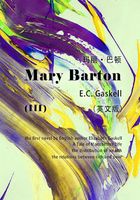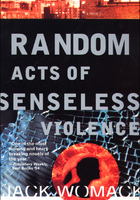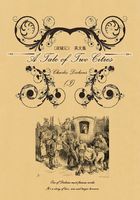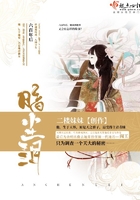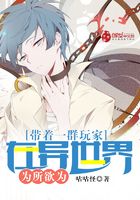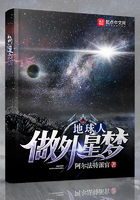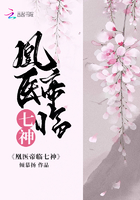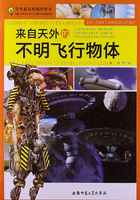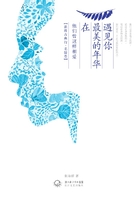I WROTE THIS book because I care about the future of our communities and our planet. I wrote it because I have the experience to help solve the public problems that challenge us; I've had failures that have taught me which paths not to take, and successes that have confirmed the ideas and actions that work.
Three key ideas anchor this book:
Courageous and compassionate people can solve any problems and meet any challenges, in their communities and in the world.
The surest path to a meaningful life is service—acting for the common good.
The key to success on this path is balance—head and heart, trust and street smarts, passion and professionalism, reflection and action.
As a young man, I didn't have these ideals or ideas. A Foreign Service Officer for the first 15 years of my professional life, I dealt with conflicts and chaos in the Third World, ignoring the suffering I saw and savoring the adventures. I cultivated a John Wayne image that I really thought was who I was. Then a battle in Vietnam forced me to confront the irresponsibility and shallowness of my life. Gradually I began to change. At the United Nations I finally learned that I could use my skills and experience to build peace and justice rather than their opposites.
I left the Foreign Service in 1980 and began creating a series of workshops helping others to create positive political change in their communities and beyond. In 1983 I merged this work with the Giraffe Heroes Project, an international nonprofit founded the year before by Ann Medlock, a New York writer and editor. Ann was convinced that, in a society grown apathetic and cynical, telling people the stories of real heroes was a powerful way to inspire them to stick their own necks out for the common good. She was right.
The project's strategy was and is simple: We find people already acting with courage and compassion to solve important public problems, and then get the stories of these “Giraffes” told over radio and television and in print. That publicity brings Giraffes attention, support, and—in the case of some Giraffes who are challenging powerful institutions—protection.
But the most important purpose of telling the stories of Giraffes is to move others to follow their lead. People hear or see these compelling stories and are inspired to take action on problems important to them. Since 1990 the project also has been using Giraffe stories as the basis for programs for schools, moving young people to lives of courage, compassion, and active citizenship. There's a vast amount of information about this work on the Giraffe Heroes Project Web site (www.giraffe.org).
You'll find stories of Giraffes throughout this book—a sampling of the many hundreds we've honored so far. Giraffes are men, women, and kids, from many races, religions, and backgrounds. They're truck drivers, students, retirees, artists, waitresses, doctors, home-makers, businesspeople, and teachers. Giraffes are working on just about every problem you can think of, from poverty to gang violence to environmental pollution. They're people like
Casey Ruud, a safety inspector who put his job on the line when he refused to ignore glaring threats to public safety at the Hanford nuclear plant (see sidebar, page 82);
Ernesto “Neto” Villareal, a high school kid in Idaho who led a campaign to stop racist insults in his school and community (see sidebar, page 8);
Andy and Vashti Hurst, who walked away from a comfortable life to fight poverty, disease, and injustice on the Pine Ridge Indian Reservation (see sidebar, page 10).
Giraffes are not supermen or superwomen, and they're certainly not saints. They're ordinary people who see a problem and decide to do something about it, despite the risks and obstacles.
At the Giraffe Heroes Project we recognize that inspiration is often not enough, so we provide practical tools that help people translate their inspiration into focused, successful actions. To create these tools, we expanded the three ideas that anchor this book into a set of strategies and techniques that can help anyone make a difference.
I've tested and refined these tools myself, as a diplomat at the United Nations, as an environmental activist helping forge common-ground solutions in land-use battles in the Pacific Northwest, and now as a peacemaker in the Middle East and Africa. I've taught many people how to use these tools in more than 20 years of speeches and workshops for communities, cities, issue groups, companies, government agencies, universities, and labor unions. Now I've put them into this book.
WHO SHOULD READ THIS BOOK
This book is for people who see problems in their communities or beyond and want to help solve them. It's written for people with a wide range of experience and skill:
If you're concerned about a public problem but don't have a lot of—or even any—experience to take it on, this book can inspire you to get started, build your skills, guide your steps, and serve as a ready reference.
If you're a seasoned activist, then in this book you'll find challenging new topics, provocative twists on familiar topics, and helpful tips and techniques to add to what you already know. If some of the sections are too basic for you, you'll find them helpful in training others.
This book is for people acting alone, with small teams, or as members of large organizations. It's for the individual who wants to write a persuasive letter to the editor, for a group of parents concerned about a problem in their kids' school, and for a Sierra Club committee fighting global warming.
This book is for followers—the quiet, behind-the-scenes people who do so much of the work. It's for leaders—the up-front people, including committee chairs, team captains, event organizers, elected officials, and the person who takes responsibility when nobody else does. It's also for people in groups and teams in which leadership is shared.
Finally, while this book focuses on solving public problems, 20 years of giving workshops has taught me that you can use the ideas here in many other areas of your life. No matter what challenges you might take on, the concepts and coaching tips in this book will increase your chances for success. You may be trying to resolve a conflict with a family member, for example, or trying to reach an agreement with a difficult neighbor or cope with a stressful situation at work. This book can help you take the right steps in all those contexts.
HARD AND SOFT
You'll quickly notice a major theme in this book: that creating change as an active citizen requires much more than intellect, energy, and force of will. These hard-edged qualities are needed, but they're not enough. After more than two decades in this work, I'm convinced that treating citizen activism solely as an intellectual and political pursuit is like watching a television set with only one channel—huge amounts of needed insights and information are missing. A large part of this book is about tuning in to those other channels. I've found the following to be true:
What most often separates success from failure in active citizenship is a positive and compassionate spirit, as well as competence in the so-called soft skills that flow from such a spirit—such as building trust, communicating with sensitivity, and inspiring others.
Being an active citizen is not just about solving problems. It's also about becoming fully alive—about the meaning and passion you can add to your own life by getting involved. The information in this book not only can change your world, but it can also change your life, as it has done for me and many others.
HOW TO USE THIS BOOK
The chapters fall into three categories (some into more than one):
■ Action Steps
Chapters 1, 2, 4, and 5 lead you through a progression of moves for creating and carrying out a project, from identifying the problem you want to work on to making a plan to deal with it. These chapters are especially valuable if you are starting from scratch on a new project.
■ Skills Building
Chapters 4, 7, 8, 9, 10, and 11 tell you what you need to know to handle specific challenges, from building a team to dealing with bureaucracies. Some of these chapters are more relevant to your situation than others, depending on the nature of the problem you've taken on.
■ Qualities of Spirit
The first part of chapter 1, chapters 3 and 6, and the epilogue discuss deeper topics relevant to active citizenship, including meaning, trust, courage, connectedness, and responsibility. I've deliberately woven these chapters throughout the book, since that's how I see successful activism working in real life: how-to steps and motivations from the heart melding with and reinforcing each other.
In addition, three ongoing case studies thread through the book, while shorter case studies illustrate specific points.
WHAT'S NOT IN THIS BOOK
There are some standard elements of active citizenship, such as fund-raising, developing Web sites, and incorporating as a nonprofit, on which there are already dozens of existing guides. I saw no point in reiterating that basic information in this book. Instead, I've given you references on these standard topics (see “Resources”), adding my own insights only where I felt they were unique and important.
ACKNOWLEDGMENTS
A group of seasoned activists vetted every chapter of this book, improving what was there and adding their own insights and anecdotes. Between their experience and my own, everything you'll read here has been honed and practiced; nothing is untested theory. This team of persevering people includes Annie Hernandez, Jan Levy, Bill Thorn, Suzanne Sinclair, Dave and Karen Anderson, Steve Scoles, Toby Thaler, Mike Rossotto, Tim Martin, and Diane Kendy.
Thanks also for all the editorial help and encouragement I received from my publishers at Berrett-Koehler. I include especially the two guys at the top, Steve Piersanti and Jeevan Sivasubramaniam, as well as reviewers Steven Slattery, Linda Klatt, Jeffrey Kulick, and Chester Delaney.
I'm especially grateful to Keith Mack and Ann Medlock at Giraffe HQ for their intense and supportive reading of my drafts. They challenged me constantly to make this book better, and I'm embarrassed at how many exaggerations, ambiguities, and lapses of logic they spotted. Also at Giraffe HQ, thanks to Mary Ella Keblusek, Karyn Watkins, Sandy Logan, and Shirley Jantz for their comments and support.
I owe a very special thanks to Evelyn Schaeffer. If ever there was a case of the student teaching the teacher, it's Evelyn and me. She contacted me in 1994 seeking my advice in her challenge of improving phone service in rural Ohio. I offered what advice I could, and for a decade Evelyn improved on it. I'm proud and grateful to include her insights and her anecdotes from her own successful activism.
Thanks also to David Mathews and Noelle McAfee for their contributions on community politics, and to Samuel Halperin for his advice on lobbying.
Writing this book meant assessing hundreds of ideas for creating change, trying to distill them into a message that was concise, consistent, and—above all—helpful. It also meant honestly assessing my own life as an agent for change, acknowledging what had worked and what hadn't. Ann Medlock, the founder of the Giraffe Heroes Project and my wife, supported me in all this from the first page. She moved me to a level of candor, precision, and introspection that I wouldn't have reached on my own. She also let me know every minute that something very good was going to result.
Finally, I acknowledge you, the reader. Whatever your experience level, I trust you'll build on what's in this book and carry it further. My hope is that this guide will serve as an inspiration and a resource for your own lifelong commitment to acting for the common good.
John Graham
Langley, Washington
January 5, 2005


